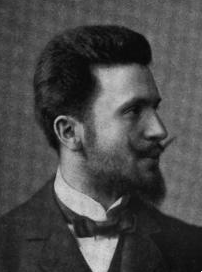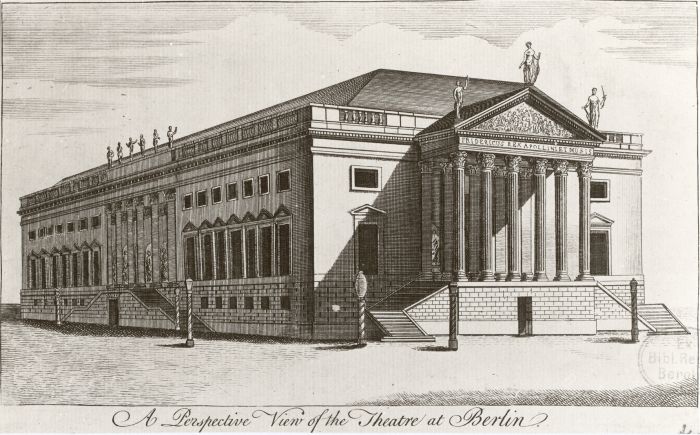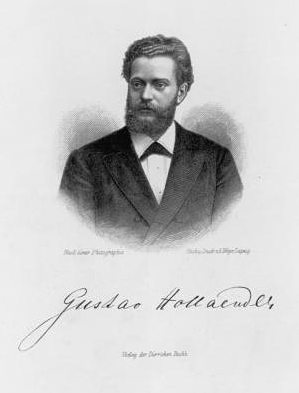|
Bruno Walter
Bruno Walter (born Bruno Schlesinger, September 15, 1876February 17, 1962) was a German-born conductor, pianist and composer. Born in Berlin, he escaped Nazi Germany in 1933, was naturalised as a French citizen in 1938, and settled in the United States in 1939. He worked closely with Gustav Mahler, whose music he helped to establish in the repertory, held major positions with the Leipzig Gewandhaus Orchestra, New York Philharmonic, Concertgebouw Orchestra, Salzburg Festival, Vienna State Opera, Bavarian State Opera, Staatsoper Unter den Linden and Deutsche Oper Berlin, among others, made recordings of historical and artistic significance, and is widely considered to be one of the great conductors of the 20th century. Biography Early life Born near Alexanderplatz in Berlin to a middle-class Jewish family, he began his musical education at the Stern Conservatory at the age of eight, making his first public appearance as a pianist when he was nine; he performed a concer ... [...More Info...] [...Related Items...] OR: [Wikipedia] [Google] [Baidu] |
Berlin
Berlin ( , ) is the capital and largest city of Germany by both area and population. Its 3.7 million inhabitants make it the European Union's most populous city, according to population within city limits. One of Germany's sixteen constituent states, Berlin is surrounded by the State of Brandenburg and contiguous with Potsdam, Brandenburg's capital. Berlin's urban area, which has a population of around 4.5 million, is the second most populous urban area in Germany after the Ruhr. The Berlin-Brandenburg capital region has around 6.2 million inhabitants and is Germany's third-largest metropolitan region after the Rhine-Ruhr and Rhine-Main regions. Berlin straddles the banks of the Spree, which flows into the Havel (a tributary of the Elbe) in the western borough of Spandau. Among the city's main topographical features are the many lakes in the western and southeastern boroughs formed by the Spree, Havel and Dahme, the largest of which is Lake Müggelsee. Due to its l ... [...More Info...] [...Related Items...] OR: [Wikipedia] [Google] [Baidu] |
Staatsoper Unter Den Linden
The (), also known as the Berlin State Opera (german: Staatsoper Berlin), is a listed building on Unter den Linden boulevard in the historic center of Berlin, Germany. The opera house was built by order of Prussian king Frederick the Great from 1741 to 1743 according to plans by Georg Wenzeslaus von Knobelsdorff in the Palladian style. Damaged during the Allied bombing in World War II, the former Royal Prussian Opera House was rebuilt from 1951 to 1955 as part of the Forum Fridericianum square. Nicknamed ''Lindenoper'' in Berlin, it is "the first theater anywhere to be, by itself, a prominent, freestanding monumental building in a city." History Names Originally called the ''Königliche Oper'' (Royal Opera) from 1743, it was renamed as the ''Preußische Staatsoper'' (Prussian State Opera) in 1919, then as the ''Deutsche Staatsoper '' in 1955. Until 1990, it housed the state opera of East Germany. Since 1990, it is officially called the ''Staatsoper Unter den Linden'' (State Ope ... [...More Info...] [...Related Items...] OR: [Wikipedia] [Google] [Baidu] |
Hamburg State Opera
The Hamburg State Opera (in German: Staatsoper Hamburg) is a German opera company based in Hamburg. Its theatre is near the square of Gänsemarkt. Since 2015, the current ''Intendant'' of the company is Georges Delnon, and the current ''Generalmusikdirektor'' of the company is Kent Nagano. History Opera in Hamburg dates to 2 January 1678 when the Oper am Gänsemarkt was inaugurated with a performance of a biblical Singspiel by Johann Theile. It was not a court theatre but the first public opera house in Germany established by the art-loving citizens of Hamburg, a prosperous member of the Hanseatic League. The Hamburg ''Bürgeroper'' resisted the dominance of the Italianate style and rapidly became the leading musical center of the German Baroque. In 1703, George Friedrich Handel was engaged as violinist and harpsichordist and performances of his operas were not long in appearing. In 1705, Hamburg gave the world première of his opera ''Nero''. In 1721, Georg Philipp Telem ... [...More Info...] [...Related Items...] OR: [Wikipedia] [Google] [Baidu] |
Der Waffenschmied
''Der Waffenschmied'' (The Blacksmith, Armourer) is an opera (Singspiel) in three acts by Albert Lortzing. The German-language libretto was by the composer after Friedrich Wilheim von Ziegler's ''Liebhaber und Nebenbuhler in einer Person'' (Lover and Rival in One Person). This is often considered his third most popular work. His works are considered to be part of the Biedermeier period. It premiered in Vienna at the Theater an der Wien on 31 May 1846 conducted by Lortzing. The role of Marie was written with Jenny Lind in mind who he hoped would sing the part. The opera was eventually successful enough that Lortzing was offered the post of Kapellmeister at the theatre which he held until the revolution of 1848, when he had to return to Leipzig. Arnold Schönberg, arranged Lortzing's "Waffenschmied“ for piano for 4 hands.Malcolm MacDonald (2008)''Schoenberg'' p. 334. Oxford University Press. The story is set in the city of Worms, Germany, Worms in the 16th century. Roles *Hans St ... [...More Info...] [...Related Items...] OR: [Wikipedia] [Google] [Baidu] |
Albert Lortzing
Gustav Albert Lortzing (23 October 1801 – 21 January 1851) was a German composer, librettist, actor and singer. He is considered to be the main representative of the German ''Spieloper'', a form similar to the French '' opéra comique'', which grew out of the '' Singspiel''. Life and career Lortzing was born in Berlin to Johann Gottlieb and Charlotte Sophie Lortzing. They had abandoned their leather shop and travelled through Germany as itinerant actors, founding the Berlin theatre company ''Urania'', and turning their amateur passion into a profession. The young Lortzing's first stage appearance was at the age of 12, entertaining the audience with comic poems during the interval in the ''Kornhaus'' at the Freiburg Münster. From 1817, the Lortzing family were part of Josef Derossi ensemble in the Rhineland, treading the boards at Bonn, Düsseldorf, Barmen and Aachen. Albert Lortzing became an audience favourite, playing the roles of a youthful lover, a country boy and bon ... [...More Info...] [...Related Items...] OR: [Wikipedia] [Google] [Baidu] |
Cologne Opera
The Cologne Opera (German: Oper der Stadt Köln or Oper Köln) refers both to the main opera house in Cologne, Germany and to its resident opera company. History of the company From the mid 18th century, opera was performed in the city's court theatres by travelling Italian opera companies. The first permanent company in the city was established in 1822, and performed primarily in the Theater an der Schmierstraße (built in 1783 as a private theatre and also used for plays and concerts). The opera company later performed in Theater in der Glockengasse (built in 1872) and in the Theater am Habsburger Ring (built in 1902). The Theater am Habsburger Ring was constructed by the city of Cologne and became its first theatre to be specifically designed as an opera house. The opera house The current opera house was designed by the German architect, Wilhelm Riphahn. It was inaugurated on 8 May 1957 in the presence of Konrad Adenauer, then the Chancellor of Germany and a former mayor of C ... [...More Info...] [...Related Items...] OR: [Wikipedia] [Google] [Baidu] |
Hans Von Bülow
Freiherr Hans Guido von Bülow (8 January 1830 – 12 February 1894) was a German conductor, virtuoso pianist, and composer of the Romantic era. As one of the most distinguished conductors of the 19th century, his activity was critical for establishing the successes of several major composers of the time, especially Richard Wagner and Johannes Brahms. Alongside Carl Tausig, Bülow was perhaps the most prominent of the early students of the Hungarian composer, virtuoso pianist and conductor Franz Liszt; he gave the first public performance of Liszt's Sonata in B minor in 1857. He became acquainted with, fell in love with and eventually married Liszt's daughter Cosima, who later left him for Wagner. Noted for his interpretation of the works of Ludwig van Beethoven, he was one of the earliest European musicians to tour the United States. Life and career Bülow was born in Dresden into an old and prominent House of Bülow. He was the son of novelist Karl Eduard von Bülow ( ... [...More Info...] [...Related Items...] OR: [Wikipedia] [Google] [Baidu] |
Robert Radecke
Albert Martin Robert Radecke (31 October 1830 – 21 June 1911; aged 80) was a German composer and conductor. Biography He was born in Dittmannsdorf, in Silesia, and received his musical training in the Conservatory of Leipzig. In 1853 he became musical director of the Court Theatre of Leipzig. He moved to Berlin soon after, played second violin in Ferdinand Laub's quartet, and gave many successful concerts. He was made royal Kapellmeister in 1871, and in 1891 succeeded Haupt as director of the Royal Institute for Church Music. His older brother Rudolf (1829–1893) was also a composer."Sein jüngerer Bruder, Robert Radecke (1830-1911), war ebenfalls Dirigent und Musiker in Berlin." (from the link.) Works An artist of ability on pianoforte, organ, and violin, Radecke is best known for his compositions, which include two orchestral overtures, ''König Johann'' and ''Am Strande''; the operetta ''Die Mönchguter'' (premiered 1874); and, above all, for his many songs, in ... [...More Info...] [...Related Items...] OR: [Wikipedia] [Google] [Baidu] |
Berlin Philharmonic
The Berlin Philharmonic (german: Berliner Philharmoniker, links=no, italic=no) is a German orchestra based in Berlin. It is one of the most popular, acclaimed and well-respected orchestras in the world. History The Berlin Philharmonic was founded in Berlin in 1882 by 54 musicians under the name Frühere Bilsesche Kapelle (literally, "Former Bilse's Band"); the group broke away from their previous conductor Benjamin Bilse after he announced his intention of taking the band on a fourth-class train to Warsaw for a concert. The orchestra was renamed and reorganized under the financial management of Hermann Wolff in 1882. Their new conductor was Ludwig von Brenner; in 1887 Hans von Bülow, the conductor of the Meiningen Court Orchestra and one of the most famous piano virtuosos of the time, took over the post. This helped to establish the orchestra's international reputation, and guests Hans Richter, Felix von Weingartner, Richard Strauss, Gustav Mahler, Johannes Brahms and Edva ... [...More Info...] [...Related Items...] OR: [Wikipedia] [Google] [Baidu] |
Stern Conservatory
The Stern Conservatory (''Stern'sches Konservatorium'') was a private music school in Berlin with many distinguished tutors and alumni. The school is now part of Berlin University of the Arts. History It was founded in 1850 as the ''Berliner Musikschule'' by Julius Stern, Theodor Kullak and Adolf Bernhard Marx. Kullak withdrew from the conservatory in 1855 in order to create a new academy of sculpture and three-dimensional art. With Marx's withdrawal in 1856, the conservatory came exclusively under the Stern family and adopted its name. In 1894 it was taken over by Gustav Hollaender (the uncle of film composer Friedrich Hollaender), who moved the school's location to the Berlin Philharmonic concert hall on Bernburger Strasse in Berlin-Kreuzberg. In the course of the ''Gleichschaltung'' process, the Stern Academy in 1936 was renamed ''Konservatorium der Reichshauptstadt Berlin'' controlled by the Nazi regime. Gustav Hollaender's heirs were disseized, but for a few years they we ... [...More Info...] [...Related Items...] OR: [Wikipedia] [Google] [Baidu] |
Middle-class
The middle class refers to a class of people in the middle of a social hierarchy, often defined by occupation, income, education, or social status. The term has historically been associated with modernity, capitalism and political debate. Common definitions for the middle class range from the middle fifth of individuals on a nation's income ladder, to everyone but the poorest and wealthiest 20%. Theories like "Paradox of Interest" use decile groups and wealth distribution data to determine the size and wealth share of the middle class. From a Marxist standpoint, middle class initially referred to the ' bourgeoisie,' as distinct from nobility. With the development of capitalist societies and further inclusion of the bourgeoisie into the ruling class, middle class has been more closely identified by Marxist scholars with the term 'petite bourgeoisie.' There has been significant global middle-class growth over time. In February 2009, ''The Economist'' asserted that over half of t ... [...More Info...] [...Related Items...] OR: [Wikipedia] [Google] [Baidu] |





.jpg)
